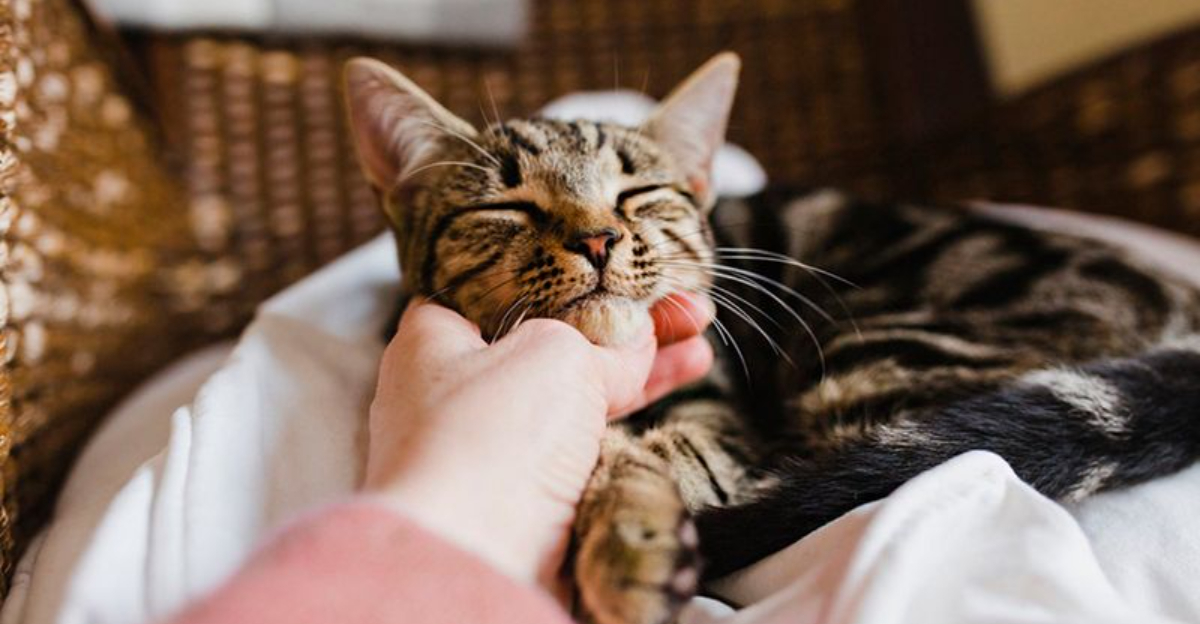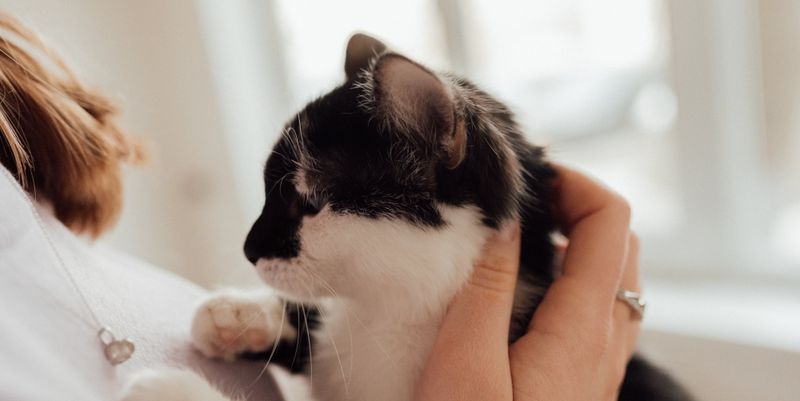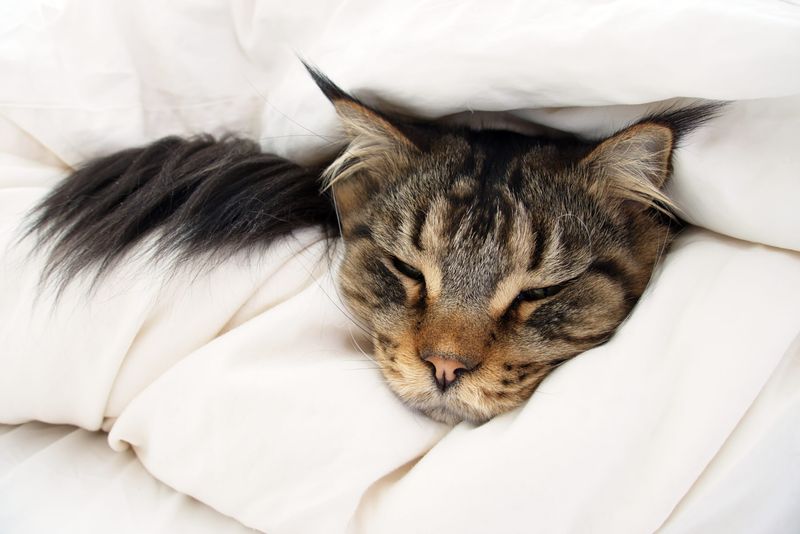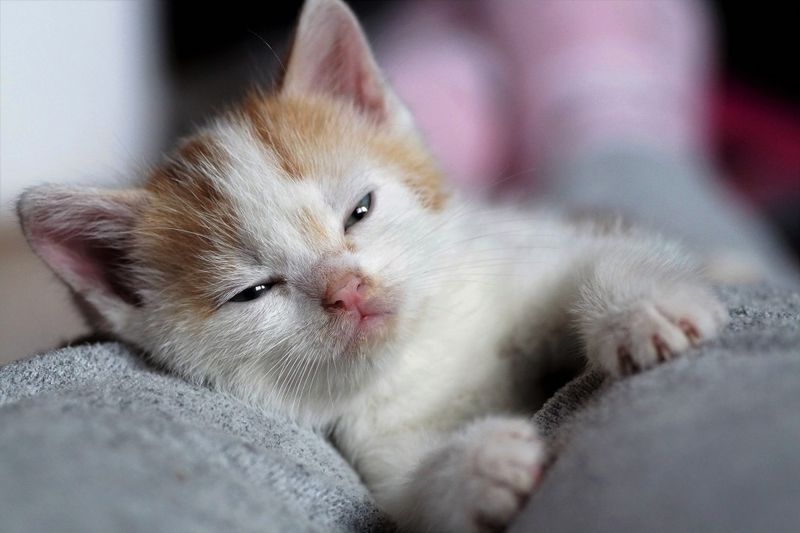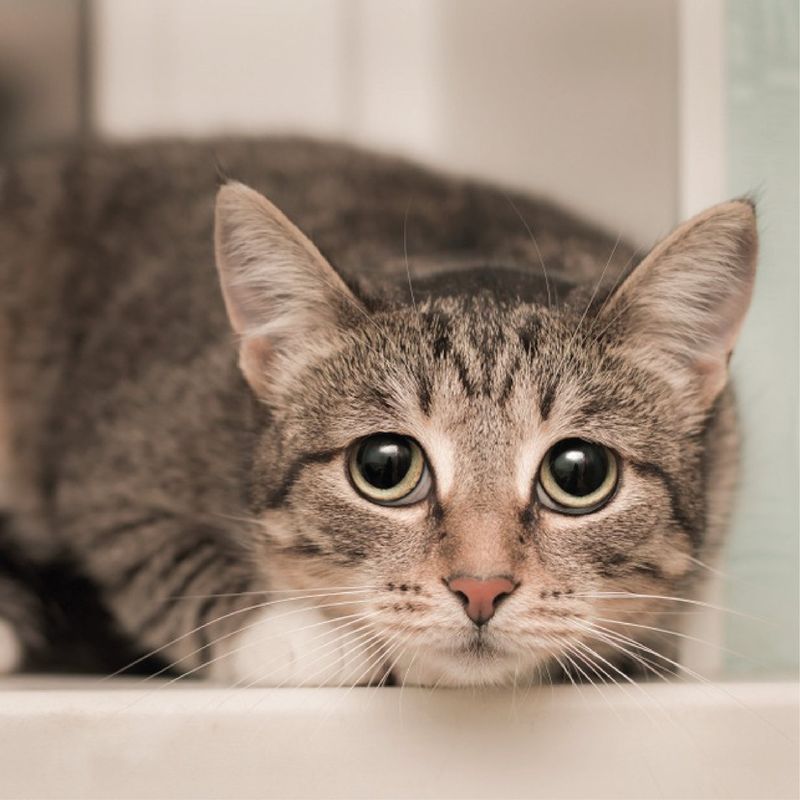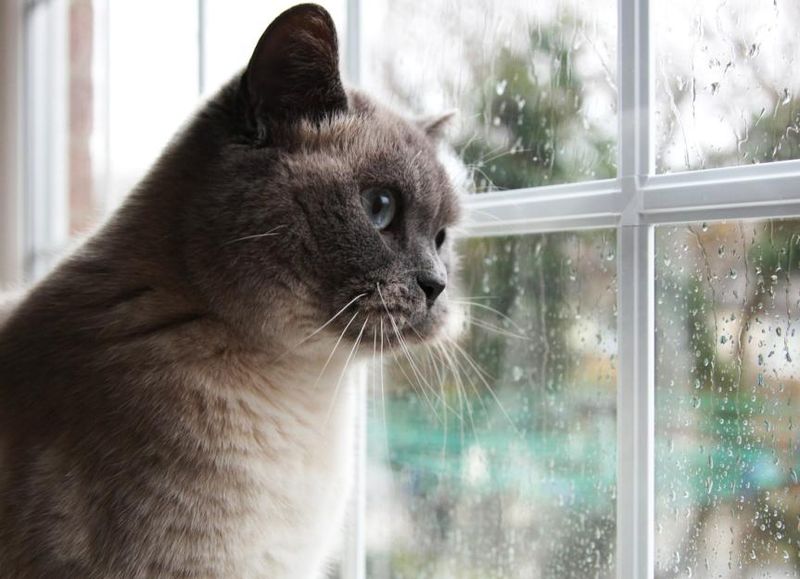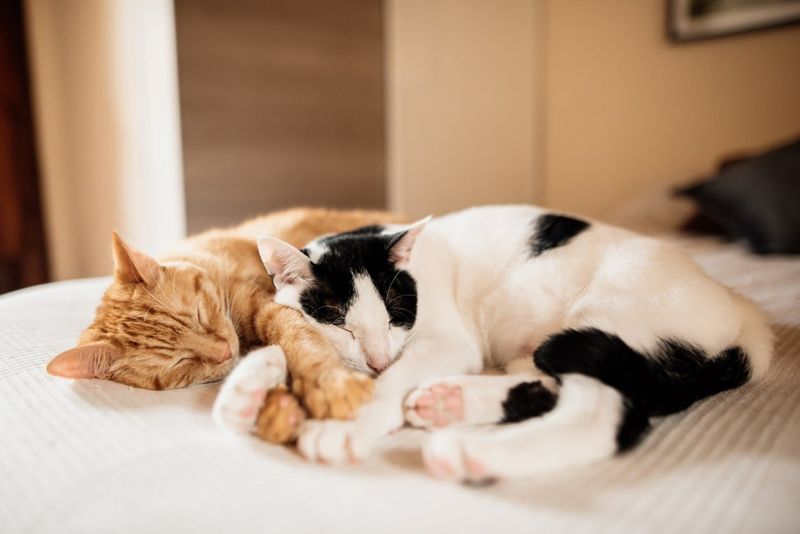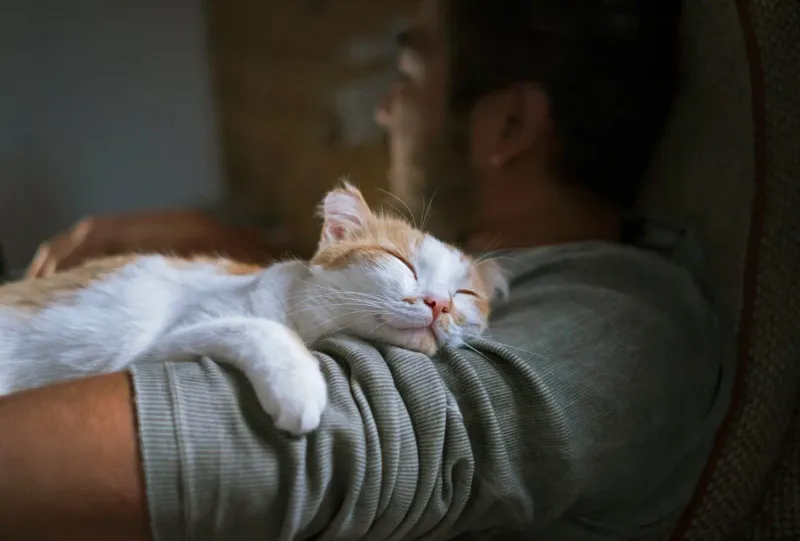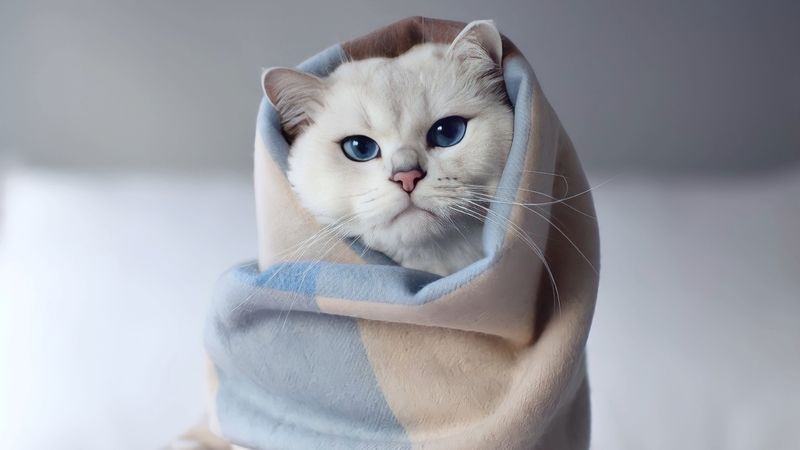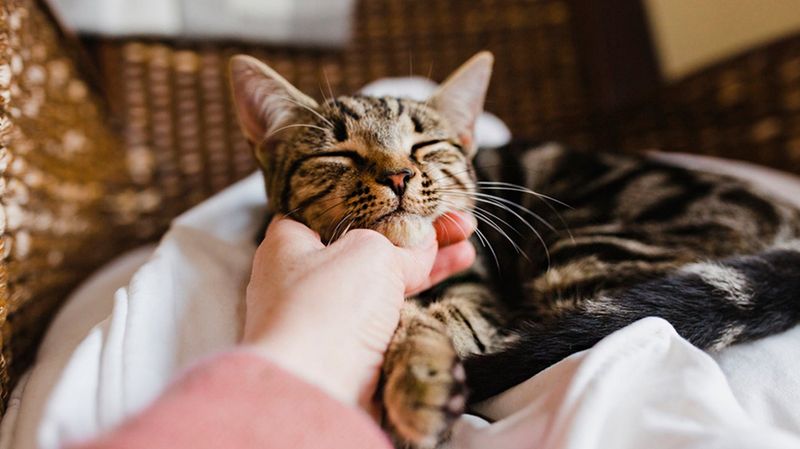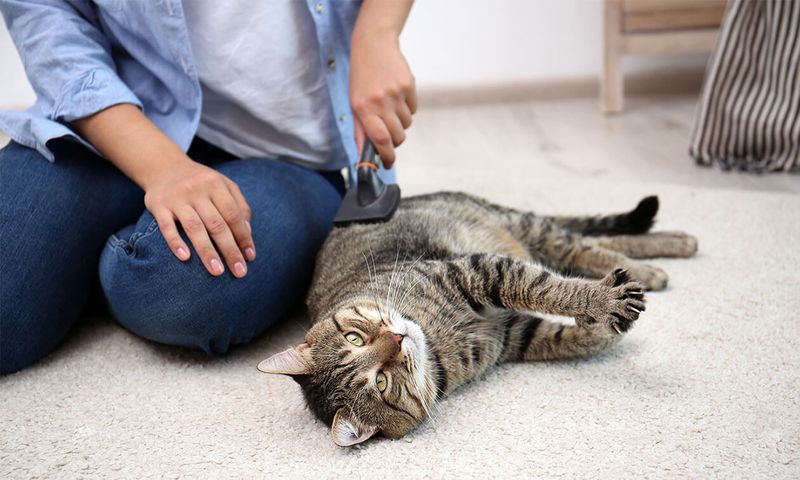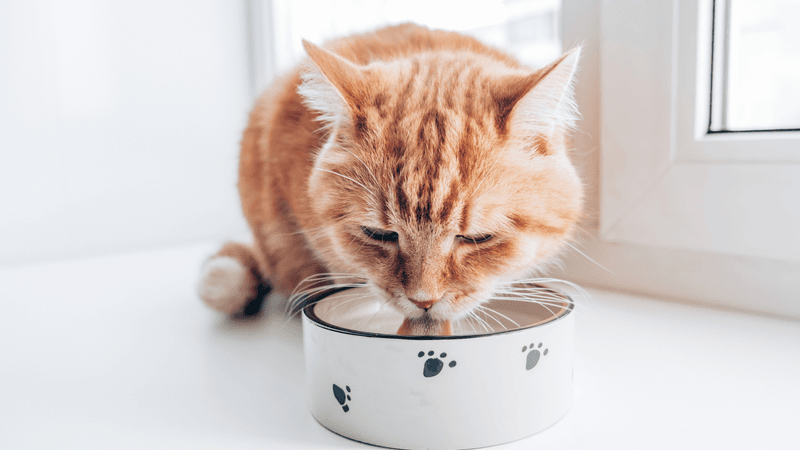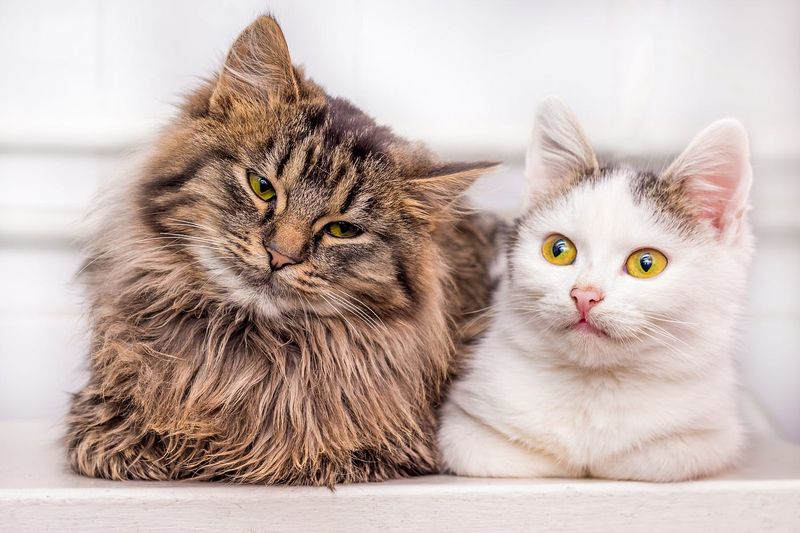📖 Table of Content:
- 1. Seeking Solitude and Hiding
- 2. Unusual Displays of Affection
- 3. Decreased Interest in Grooming
- 4. Meaningful Eye Communication
- 5. Leaving Behind Personal Items
- 6. Making One Last Visit to Special Places
- 7. Vocalization Changes
- 8. Transferring Guardianship
- 9. The Final Purr
- 10. Renewed Energy and Appetite
- 11. Responding to Treatment
- 12. Seeking Comfort Items
- 13. Maintaining Routines
- 14. Fighting Through Pain
- 15. Maintaining Hydration
- 16. Social Engagement
- 17. Defying Veterinary Timelines
Cats express themselves in quiet, often subtle ways, particularly as they approach the end of life. Their behavior can shift noticeably, offering clues about their physical and emotional state. Paying attention to these changes can reveal important messages.
Some cats may seek more solitude, while others become unusually affectionate or clingy. Changes in appetite, grooming habits, or energy levels often signal deeper issues. These signs are not accidental but reflect a cat’s internal experience.
Recognizing these patterns allows for more compassionate care during a profoundly sensitive time. Each gesture, however small, can carry significant meaning. Through observation and understanding, a deeper bond can form, even in their final moments.
1. Seeking Solitude and Hiding
Many cats instinctively isolate themselves when they feel their time is approaching. This behavior stems from their wild ancestors, who would separate from their group to avoid attracting predators while in a weakened state.
Your feline friend might retreat to closets, under furniture, or even outdoors to unfamiliar places. This withdrawal isn’t a rejection of your love but rather a deeply ingrained survival instinct.
Some cats may choose a quiet, dark space where they feel safe and protected during their vulnerable moments. Respecting their need for space while checking on them gently shows your understanding of their natural process.
2. Unusual Displays of Affection
As they near the end, some cats display surprising levels of affection. Even those usually distant may begin to follow closely, craving touch and closeness.
These precious moments represent their way of strengthening your bond one last time. Your cat may purr more intensely, knead you continuously, or gaze into your eyes longer than usual.
The normally independent pet might refuse to leave your side, sleeping pressed against you or following you from room to room. This behavior signals their trust in you during their vulnerable transition and their desire for comfort from their favorite human.
3. Decreased Interest in Grooming
Meticulous by nature, cats usually keep themselves exceptionally clean. A noticeable decline in grooming often points to physical discomfort or emotional distress.
Their fur becomes matted and unkempt as they lack the energy or motivation to perform this once-essential ritual. You might notice dandruff, a dull coat, or even waste material stuck to their fur.
This neglect of personal hygiene isn’t laziness but rather their body conserving energy for vital functions. The absence of this fundamental feline behavior often indicates they’re prioritizing their remaining strength for essential survival rather than appearance.
4. Meaningful Eye Communication
The slow blink from a cat has always been their way of showing trust and love. During their final days, these eye communications often become more deliberate and prolonged.
Your feline companion might hold your gaze for extended periods, communicating volumes without making a sound. Their pupils may appear different – either very dilated or unusually constricted, regardless of lighting conditions.
Some cat owners report a distinct change in their pet’s eyes, describing them as appearing more distant or sometimes unusually clear and focused. This gaze often feels like they’re trying to imprint your image in their memory or convey a final message of appreciation.
5. Leaving Behind Personal Items
Some cats deliberately place their favorite toys or objects where their humans will find them. This touching behavior seems like a conscious act of leaving something behind.
You might discover their cherished catnip mouse in your shoe or their favorite jingle ball on your pillow. These small gestures feel remarkably intentional, as if they’re ensuring you’ll have a tangible reminder of their presence.
Cat behaviorists note this could be their way of marking you with their scent one final time or ensuring their legacy remains in your daily life. While science hasn’t fully explained this behavior, many pet parents find profound comfort in these small tokens.
6. Making One Last Visit to Special Places
Cats often make deliberate journeys to locations that held significance in their lives before passing. Your feline friend might visit their favorite sunning spot, the window where they watched birds, or the corner where they first nursed their kittens.
This behavior resembles a farewell tour of meaningful territories. Indoor-outdoor cats sometimes return to their birth location or visit neighbors who showed them kindness over the years.
These final pilgrimages appear to provide closure for them, revisiting places that brought joy or comfort throughout their lives. Watching this ritual unfold can be both heartbreaking and beautiful as they honor the spaces that defined their world.
7. Vocalization Changes
The sounds your cat makes may dramatically transform as they approach life’s end. A previously quiet cat might become unusually vocal with haunting meows that sound different from their normal communication.
Conversely, a typically talkative feline might fall completely silent. These vocalizations often occur at unusual times, particularly during the night when the house is quiet.
The tone and pitch frequently change, sometimes becoming more urgent or mournful. While distressing to hear, these sounds aren’t necessarily indicating pain – they often represent their attempt to process their changing physical state or communicate their awareness of the transition they’re experiencing.
8. Transferring Guardianship
Multi-pet households sometimes witness a remarkable behavior where a dying cat seems to deliberately transfer their protective role to another animal. The declining cat might spend more time with their chosen successor, sharing sleeping spots or grooming them with unusual attention.
This passing of the torch often involves the dying cat spending time with the pet they believe will care for their human after they’re gone. The selected animal frequently begins showing new protective behaviors toward family members.
While scientifically unexplained, countless pet owners have observed this touching transition of responsibility. This final act ensures their family remains protected and cared for, revealing the depth of feline emotional intelligence.
9. The Final Purr
A cat’s purr typically signals contentment, but their final purr often carries a different quality. This last vibration frequently occurs during a moment of connection with their favorite person, even when they appear too weak for other movements.
The sound might be softer or slightly altered from their normal purr, yet distinctly recognizable. Many pet parents report their cat summoning the strength for one last rumble while being held or stroked.
Scientists believe purring can be self-soothing for cats in distress, so this final comfort mechanism helps them through their transition. This precious farewell often becomes a treasured memory for grieving owners who recognize it as their cat’s last expression of love.
10. Renewed Energy and Appetite
A sudden burst of vitality in a previously declining cat often signals their fighting spirit. This phenomenon, sometimes called the ‘rally,’ can be both hopeful and confusing for pet parents.
Your feline friend might unexpectedly play with toys, request favorite treats, or jump onto furniture they haven’t accessed in months. Their eyes appear brighter and more alert during these periods, sometimes lasting hours or even days.
While this doesn’t necessarily indicate recovery, it demonstrates their resilience and determination. This renewed engagement with life represents their strong will and desire to continue connecting with you, showing they’re not ready to surrender to illness just yet.
11. Responding to Treatment
A determined cat can respond positively to medical efforts, defying initial expectations. In cases that seem hopeless, improvement is still possible.
Their vital signs stabilize, bloodwork shows positive changes, or symptoms temporarily subside. Veterinarians sometimes express surprise at these unexpected positive responses that defy medical expectations.
This biological resilience reflects their internal battle against illness. While not every treatment brings a miracle, these positive responses indicate your cat’s body is actively working alongside veterinary care. Their willingness to tolerate medications or treatments further demonstrates their determination to remain with their beloved humans.
12. Seeking Comfort Items
Fighting cats often seek out objects that provide security and comfort. Your resilient companion might drag their favorite blanket to their resting spot or surround themselves with cherished toys that previously brought joy.
This self-soothing behavior shows their desire to create a healing environment. Some cats will retrieve items with strong family scents, like your unwashed clothing or a child’s stuffed animal.
The deliberate collection of these comfort objects reveals their instinctive understanding of emotional well-being’s role in physical recovery. By creating a nest of familiar scents and textures, they’re actively participating in their own care and demonstrating their desire to overcome their current challenges.
13. Maintaining Routines
Despite illness, a cat that continues following established household patterns shows remarkable determination. They might struggle to their feet when they hear the food can opening or attempt to join family movie night despite their weakness.
This persistence in maintaining normalcy demonstrates their fighting spirit. Even with diminished strength, they’ll make efforts to use their litter box properly or greet you at the door when you return home.
These attempts to participate in family life reveal their unwillingness to surrender to their condition. Their determination to maintain their role and routines within the household shows they’re actively resisting the progression of their illness and fighting to preserve their place in your daily life.
14. Fighting Through Pain
While cats instinctively conceal pain, a determined one may still push past discomfort to stay active. Despite wincing, they often strive to reach familiar spots or stay close to loved ones.
Their determination to engage in normal activities despite obvious discomfort reveals extraordinary resilience. You might notice them pausing to rest between short bursts of movement, gathering strength before continuing their chosen activity.
This refusal to be limited by their condition demonstrates their powerful will to live. While ensuring proper pain management remains essential, recognizing this fighting behavior helps distinguish between a cat who needs palliative care versus one still actively battling their condition.
15. Maintaining Hydration
A cat’s continued interest in water indicates their body’s fight for survival. Even when refusing food, a fighting cat often maintains hydration by seeking water from various sources.
They might explore different water bowls, drink from sinks, or show interest in water-rich foods like broths. This selective appetite demonstrates their instinctive understanding of hydration’s critical importance.
Their body prioritizes this essential need above others, showing biological resilience. This behavior differs significantly from end-of-life cats who typically refuse both food and water. A cat that continues seeking hydration is communicating their body’s continued efforts to maintain basic functions – a powerful sign they’re not ready to surrender.
16. Social Engagement
Seeking out family members during illness reveals a cat’s enduring spirit. They cling to social rituals as a source of comfort and resilience.
Your determined feline might still respond to their name, watch family conversations with interest, or position themselves in communal areas rather than hiding. They may use the last of their energy reserves simply to be near loved ones during gatherings.
This continued social connection reveals their unwillingness to withdraw from family life. While they might not play or interact with their usual energy, their deliberate presence and attention to household activities shows they’re actively fighting to maintain their place in the family unit.
17. Defying Veterinary Timelines
Some cats demonstrate extraordinary resilience by surviving far beyond veterinary expectations. After receiving concerning diagnoses with specific timelines, these fighters continue living weeks, months, or occasionally years longer than predicted.
Your determined companion might stabilize unexpectedly or show improvements that confound medical professionals. Their condition may reach a plateau rather than the expected decline, maintaining a consistent quality of life despite their diagnosis.
These medical mysteries often occur in cats with strong bonds to their families and supportive home environments. While not every cat can defy medical odds, these remarkable cases remind us that veterinary science cannot always predict an individual animal’s will to live and capacity for adaptation.
